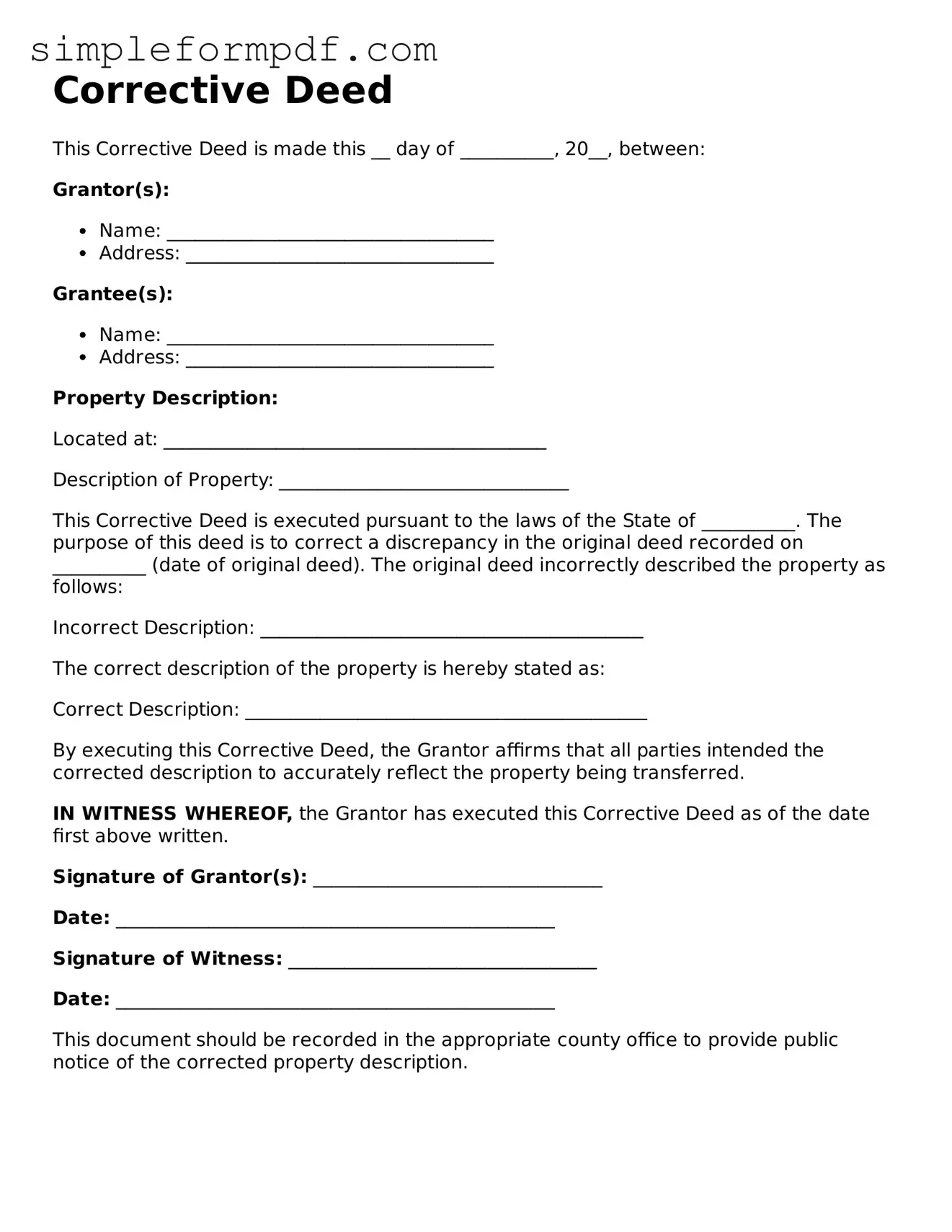Corrective Deed
This Corrective Deed is made this __ day of __________, 20__, between:
Grantor(s):
- Name: ___________________________________
- Address: _________________________________
Grantee(s):
- Name: ___________________________________
- Address: _________________________________
Property Description:
Located at: _________________________________________
Description of Property: _______________________________
This Corrective Deed is executed pursuant to the laws of the State of __________. The purpose of this deed is to correct a discrepancy in the original deed recorded on __________ (date of original deed). The original deed incorrectly described the property as follows:
Incorrect Description: _________________________________________
The correct description of the property is hereby stated as:
Correct Description: ___________________________________________
By executing this Corrective Deed, the Grantor affirms that all parties intended the corrected description to accurately reflect the property being transferred.
IN WITNESS WHEREOF, the Grantor has executed this Corrective Deed as of the date first above written.
Signature of Grantor(s): _______________________________
Date: _______________________________________________
Signature of Witness: _________________________________
Date: _______________________________________________
This document should be recorded in the appropriate county office to provide public notice of the corrected property description.
